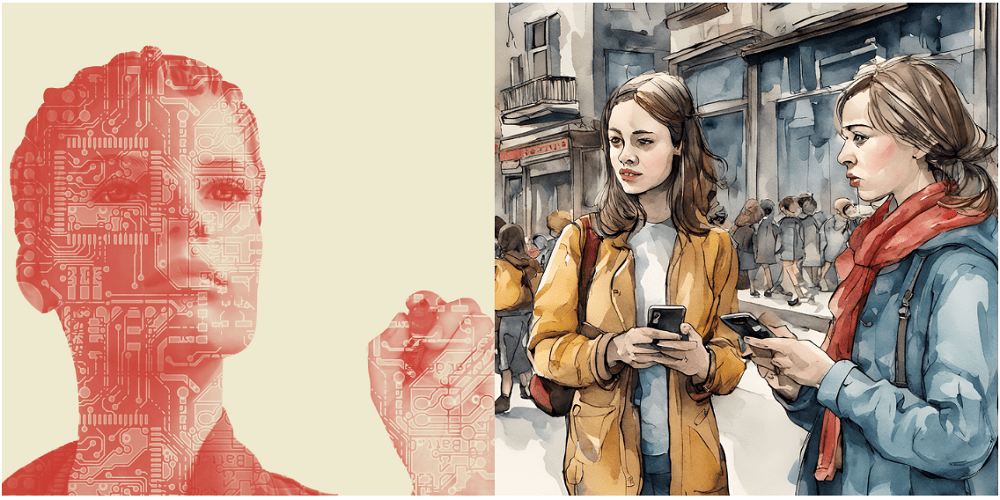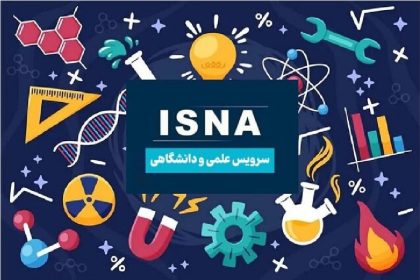In the rapid world of technology, artificial intelligence is conquering unprecedented speeds of different areas of human life. Recent studies show that the technology’s acceptance rate has surpassed the speed of the Internet and PCs. New Technologies researcher “Shabnam Lashkari” describes why this speed of acceptance in a conversation with Digiato. He described the high efficiency of artificial intelligence for increasing productivity and easier access to it as one of the reasons for faster acceptance of artificial intelligence. The researcher further warns AI may exacerbate income inequality. According to him, with the expansion of this technology, there is a risk of intensifying digital gaps, especially in Iran where we are facing problems such as sanctions and filtering.
Data on the National Bureau of Economic Research (NBR) show that the general public has accepted productive artificial intelligence (GENAI), especially tools such as ChatGPT, much faster than previous technologies such as the Internet and PCs.
The study, produced by three researchers entitled “Rapid Acceptance of Product Artificial Intelligence”, says that nearly 40 percent of American adults over the age of 18 to 64 have used productive artificial intelligence tools such as ChatGpt over the past two years. It took about 12 years for personal computers and about 5 years for the Internet.
According to the authors of this article, various factors are involved in the speed of acceptance of productive artificial intelligence. First, Genai is cheaper and more accessible than PCs and the Internet. Secondly, Genai has a wide variety of applications and can be used for a wide range of tasks.
The use of productive artificial intelligence is also not the same between different groups of society; Youth, educated people, and specialized job professionals are the most technology users. Men also use this technology more than women. Productive artificial intelligence is used in a variety of areas, including content production, administrative affairs, programming and even the creation of artworks.
According to surveys, between one and five percent of the current working hours are being carried out with the help of productive artificial intelligence, and respondents report that time savings have experienced 1.4 % of the total working hours.
However, the authors of this article warn that artificial intelligence is generating emerging technology and its long -term effects are still unclear. They also point out that Genai can have negative consequences, such as losing jobs and increasing inequality.
Examine the challenges and opportunities of productive artificial intelligence
To deepen the various aspects of this topic, we talked to New Technology Researchers. Referring to the essential role of digital technologies in people’s lives, he believes that the high efficiency of artificial intelligence to increase productivity and easier access to it has led to the increasing expansion of Genai’s use.

The army also points to the dangers of artificial intelligence that can lead to income inequality; People with high skills can increase their productivity and enjoy more benefits. On the other hand, people who are unable to adapt to these changes will be abandoned.
According to him, artificial intelligence can exacerbate digital inequality and divisions in societies, especially in Iran, given problems such as sanctions and filtering, this gap can be deeper.
Mojtaba Astana – Digiato: Over the past few decades, new technologies have been facing resistance to acceptance and use at the beginning of the release. This resistance seems to be almost broken and we are seeing the speed of adopting new technologies. What factors do you think have been involved in this?
Shabnam Lashkari – Modern Technologies Researcher: The adoption of emerging technologies such as artificial intelligence is influenced by several factors; One of the most important is the level of literacy and awareness of the community. According to available statistics, the generations of the millennium have the highest use of this technology. At this time, the Zed generation is known to be the most active users; Because they have grown in the digital world since childhood and adolescence. This has made them acceptable and adaptable to new technologies, much faster than previous generations; Therefore, the process of accepting artificial intelligence occurs more quickly than in the past.
In addition, in the present age, digital technologies play a key role in everyday life, many positive experiences have made people more and more of the benefits of these technologies; This means that if artificial intelligence lacks tangible and useful applications and users did not experience productivity through these tools, acceptance would not have happened at this speed. In fact, the degree of technology acceptance depends largely on the general understanding of its benefits. The more people feel the positive impact of this technology on their personal or professional life, the more accepted it will accelerate.
Overall, we are facing a cultural change and raising awareness and literacy, which has led to the adoption of new technologies faster. This is especially evident in productive artificial intelligence; It has been faster than the Internet and PCs. Of course, it should not be overlooked that Extensive advertising about artificial intelligence also plays a significant role in increasing its acceptance. On the other hand, unlike technologies such as PCs or the Internet that needed expensive hardware and infrastructure, many artificial intelligence tools are available to users at a low cost, and some are even offered for limited use. In addition, the high portability of these tools compared to PCs has facilitated the possibility of extensive use of them outside the workplace, including personal affairs. This High level of access and convenienceIn turn, it has increased the increasing use of artificial intelligence.

What role did social media and media learning in increasing the speed of acceptance of artificial intelligence?
Social media today play an important role in the education and promotion of the use of new technologies. One of the most important reasons for this Easy and free access to information and educational resources Is. Users can access a variety of educational content, educational videos and experiences through these platforms. In addition, the process of knowledge exchange and continuous information update to social media allows users to develop their own skills purposefully and intelligently.
Another feature of the social media that goes back to the philosophy of formation is the increase in users’ participation in social, cultural and political spheres. This process can be seen as part of the process of democratic society that has been reinforced through digital technologies. This feature can also be seen in other new technologies; For example, the NFT has made the art market, previously owned by traditional institutions and large galleries, to open to a broader range of artists and buyers. Independent artists can now sell their work without intermediaries. The same thing happened about productive artificial intelligence. With the general public access to this technology, new content production opportunities have been created and ordinary users can produce without the need for complex technical skills, text, images, videos and even music. This has changed the traditional boundaries of content production and more people can express their creativity and convert ideas into product. In this historic process, people have become more active and empowered than ever before and have learned how to use new technologies in their favor. While previous generations were more consumers of content and used communication technologies, such as television as a one -way communication media, the new generation is active in social media and producing and sharing knowledge and content. This change of attitude and behavior in the generation that has grown up with social media has made it easier for technologies such as artificial intelligence to experience much easier than previous generations.

What cultural and social consequences have this increase in the speed of adopting new technologies? Does the community have enough opportunity to adapt to these changes and use new technologies?
As for artificial intelligence, one of the most important social consequences of this technology is the changes in the labor market, employment, skills and income. With the advent of this new technology, we will see some jobs eliminated and at the same time, there will be changes in how markets work. As artificial intelligence contributes to increased productivity, new markets will be formed that will increase demand for the emerging industries.
Another issue that should be paid to this is the effects of artificial intelligence on income inequality. In various studies, it has been shown that productive artificial intelligence may have a greater impact on higher wage jobs than jobs with lower wages; That is, over time, the use of this technology can greatly increase the productivity of high skills, so they will benefit from more benefits, and the revenue gap of high and low wages will increase increasingly. This process can lead to an increase in economic inequality, and people who are unable to adapt to these changes are abandoned.
On the other hand, in a new world that has been affected by artificial intelligence New skills need to be able to adapt to these developments. Skills such as analytical thinking, creativity, the ability to solve complex problems, individual and social skills such as constant learning and curiosity and technology and digital literacy skills will be of particular importance. Given the speed of adopting new technologies, planning and skills in the field had to happen in societies before so that people could succeed in workplace affected by artificial intelligence, but if these skills are not strengthened, people without these skills in the digital labor market may have problems with artificial intelligence. This high speed of technology acceptance in a country like Iran, which is traditionally destined to modern technologies, creates much more severe challenges. Our country, given that it does not have an efficient and systematic plan to deal with technological changes; It may not be able to properly coordinate itself with the rapid developments of artificial intelligence. This could boost the labor market with confusion and concerns and fears of the loss of jobs in society.
From a cultural point of view, one of the most important consequences of democratic artificial intelligence tools is to make creative expression and strengthen and empower artists, creators of works, and generally users in the production of cultural and creative products and works. Artificial intelligence can be considered a tool for completing and expanding human creativity, but concerns such as harm to human creativity, protection of copyright of inequality in access are also raised. Overall, the task of policymakers in this field is very heavy and should strive to prepare people to adapt to these changes through educational policies, empowerment, and promotion of digital literacy and artificial intelligence in the community, and on the other hand, by investing, creating appropriate legal frameworks and eliminating our inhumane development and negligence. Technology acceptance of this weakness is more evident.

So it can be concluded that this speed of acceptance will lead to risks such as digital inequality and can lead to a digital gap in communities?
Yes, extensive research has been conducted on the challenges of artificial intelligence that clearly shows that this technology can exacerbate digital inequality and gaps in societies. Based on the patterns of productive artificial intelligence, people with higher education and revenue have been adopted and used more than others; A trend we’ve seen in the past in technologies such as PCs and the Internet. However, the costly, multiplicity, and multifaceted capabilities have made artificial intelligence tools more accessible than past tools and technologies; For this reason, the inequalities that these tools may create are far less than we have seen in previous generations of technological tools. Of course, factors such as place of residence, gender, age, digital literacy still have an impact; For example, research in the United States shows that men use productive artificial intelligence approximately 2 percent more than women in the workplace. In addition, there are problems in our country such as inadequate infrastructure, foreign sanctions, restricting access to some services, and filtering issues that make the use of this technology that has a positive impact on productivity and economics, with difficulties and a deeper digital gap.
How to prevent this digital gap?
To counter the digital divide in the field of artificial intelligence, a comprehensive approach needs to be adopted that include economic reduction, extensive training programs, development of artificial intelligence research with government support, and upgrading digital infrastructure and skills. The realization of this requires joint cooperation between governments, businesses and civil communities to access this fair and inclusive technology.
In this regard, regulations must be formulated that are detailed and directly addressed to the subject of digital literacy in the field of artificial intelligence and digital divide. At the international level, most of the documents focus on the technological aspects of artificial intelligence and less attention to its social impacts. In Iran, too, the National Document of Artificial Intelligence emphasizes more on cultural aspects, but social and economic issues are less concerned. Of course, in the field of education, most policy documents in different countries have dealt with this issue. In Iran, too, the document approved by the Supreme Council of the Cultural Revolution refers to education, although the issue of knowledge inequality requires more attention. Education plays an important role in reducing digital gaps; Because this gap is not limited to technical skills or access to technology, it also includes the ability to understand, develop and control these technologies. Many people still do not know how artificial intelligence works, how to teach, and what opportunities and challenges they have. As a result, people with less digital literacy can not benefit from the benefits of this technology, but are more likely to be exposed to inaccurate information.
The staggering speed of productive artificial intelligence indicates the high potential of this technology in transforming human life, but policymakers, professionals and the general public need to plan responsible use of the technology.
RCO NEWS
















